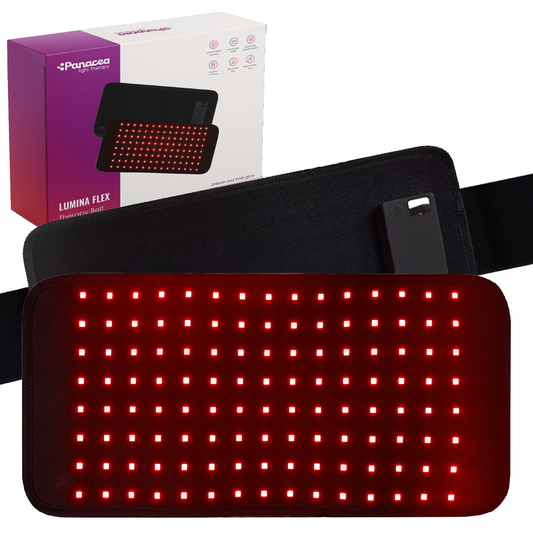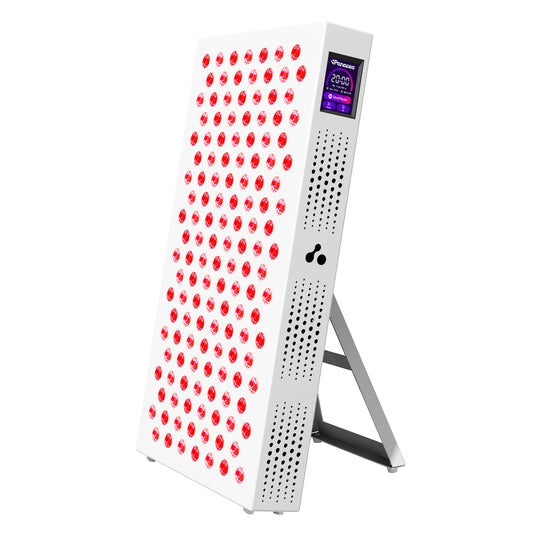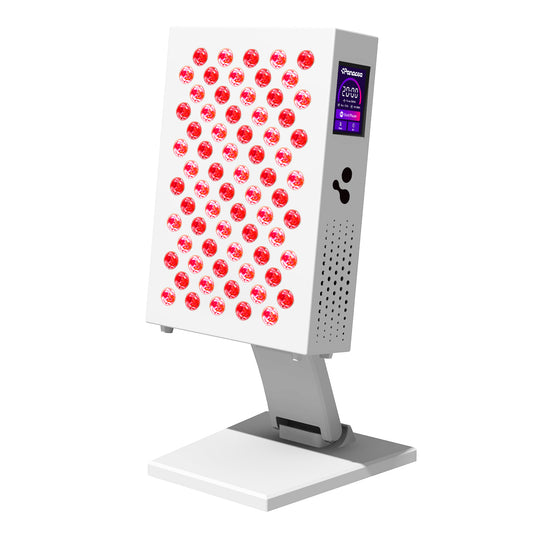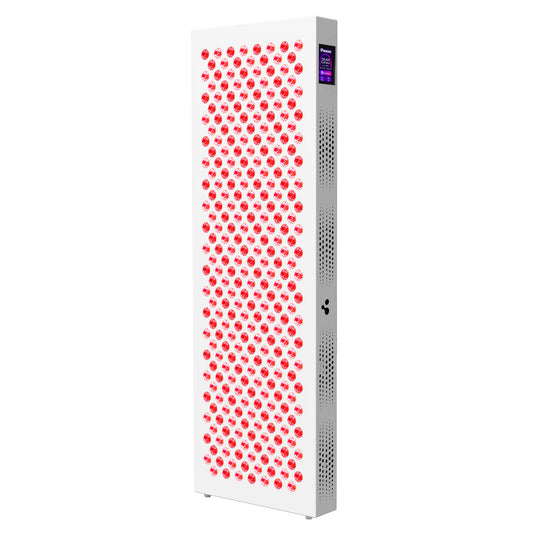
Red Light Therapy and Dual vs. Single LED Chips: What's the Difference?
Red light therapy is a popular and scientifically proven treatment that offers numerous benefits for the skin, muscles, and even mental health. One of the most important factors when choosing a red light therapy lamp is the way the LED chips are designed and deployed.
A common distinction is between dual LED chips and single LED chips . While both have their own advantages, it is essential to understand how they work and how they affect the effectiveness of the therapy.
In this blog, we’ll explain the difference between dual and single LED chips, how they affect the distribution of light and wavelengths, and why it’s important to ensure that 660nm red and 850nm near infrared light make up at least 70% of the wavelengths. We’ll also discuss why “double wattage” claims are often misleading, and how dual chips, when used correctly, can be just as effective as single chips.
Single vs. Dual LED Chips: What's the Difference?
- Single LED Chips : Each LED chip emits a single wavelength, such as 660nm or 850nm.
- Dual LED Chips : With dual LED chips, one LED chip can emit two different wavelengths, such as 630nm and 660nm or 810nm and 850nm. This allows one LED to operate multiple wavelengths at the same time, which can save space and theoretically provide more coverage.
The Influence on Wavelength Distribution
In red light therapy, the 660nm and 850nm wavelengths are essential, as they have been scientifically proven to be the most effective for stimulating collagen production , reducing inflammation , improving skin health , and muscle repair . Therefore, it is crucial that these wavelengths together make up at least 70% of the total light in a lamp.
Single LED chips make it relatively easy to achieve this balance. For example, a light can be designed with 40% of the LEDs emitting 660nm and 40% emitting 850nm, ensuring that the most important wavelengths are well represented.
When using dual LED chips, the division can become more complicated. For example, if a chip is split 50/50 between two wavelengths, such as 630nm and 660nm or 810nm and 850nm, this could mean that only 25% of the light is 660nm and 25% is 850nm , while this percentage should be much higher for maximum effectiveness. This can reduce the effectiveness of the most important wavelengths.
Dual LED Chips: Not Worse, But More Complex
It is important to emphasize that using dual LED chips is not worse than single LED chips. Both have their own advantages and can be effective if used correctly . When using dual chips, care must be taken to ensure that the distribution of wavelengths is correct. This means that 660nm and 850nm should still constitute at least 70% of the total output, regardless of whether dual or single chips are used.
The problem arises when manufacturers use dual chips without properly arranging this distribution, which results in important wavelengths, such as 660nm and 850nm, not getting enough attention. This can happen when manufacturers use dual chips as a marketing ploy to offer more wavelengths without actually ensuring a good distribution of light.
Misleading Wattage Claims: What Really Changes?
Some manufacturers claim that bulbs with dual LED chips have a higher wattage because two wavelengths are emitted from one LED chip. This may give the impression that the bulb is more powerful or provides more energy, but this is misleading .
The wattage of the bulb remains the same , regardless of whether single or dual chips are used. What changes is that a single LED chip can now emit two wavelengths at once . While this may theoretically save space, it does not change the amount of energy the bulb uses or the light output. It is simply a distribution of wavelengths, not an increase in total energy output.
So it is important not to be misled by claims of "double wattage" in lamps with dual LED chips. The power of the lamp remains the same, and the most important factor remains the effective distribution of the wavelengths .
The Importance of 70% 660nm and 850nm Wavelengths
The most crucial aspect of an effective red light therapy lamp is that the main wavelengths, 660nm and 850nm , make up at least 70% of the total light. This is the amount that has been scientifically proven to deliver the best results for both skin improvement and muscle recovery.
When dual LED chips are used without proper distribution, this percentage of 660nm and 850nm can be too low, which will be detrimental to the effectiveness of the therapy. This means that you may not be getting the full benefits of red light therapy, even if the lamp seems powerful.
When choosing a lamp, it is therefore essential to ensure that these wavelengths are well represented, regardless of whether the lamp uses single or dual chips.
Conclusion: Dual LED Chips Can Be Effective If Used Properly
Both single and dual LED chips can be effective for red light therapy if used correctly . Using dual chips is not necessarily worse, but it is important to ensure the correct distribution of wavelengths . Manufacturers need to ensure that the most important wavelengths, 660nm and 850nm, are well represented, and not just used as a marketing ploy to offer more variety in wavelengths.
Claims of higher wattage due to the use of dual LED chips are often misleading. The wattage remains the same, and the effectiveness of the lamp ultimately depends on the right balance between the main wavelengths.
When choosing a red light therapy lamp, it is therefore essential to look not only at the number of wavelengths or the wattage, but especially at how well the most important wavelengths are represented and utilized for an optimal therapy experience.







